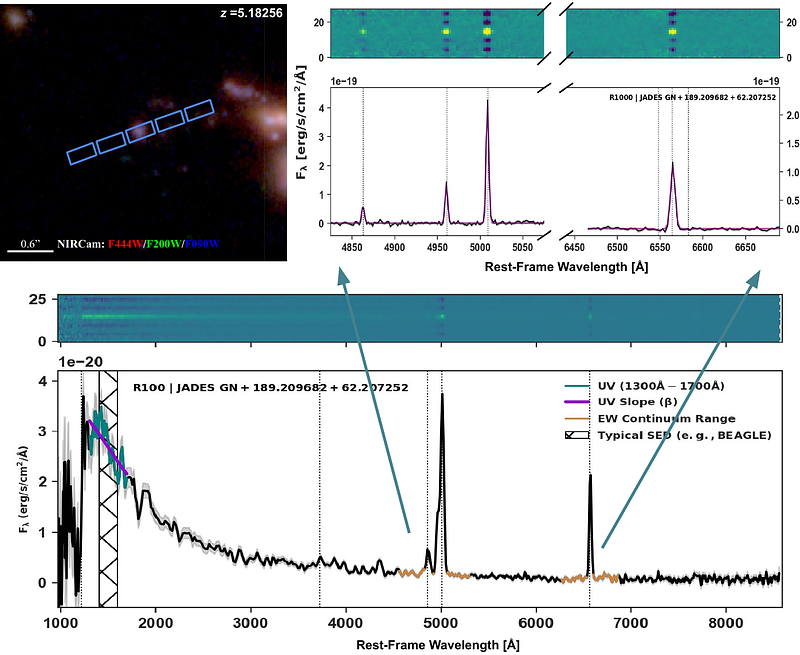Efficient Ionizers with Low H$\boldsymbolβ$+[OIII] Equivalent Widths: JADES Spectroscopy of a Peculiar High-z Population

Efficient Ionizers with Low H$\boldsymbolβ$+[OIII] Equivalent Widths: JADES Spectroscopy of a Peculiar High-z Population
Isaac H. Laseter, Michael V. Maseda, Charlotte Simmonds, Ryan Endsley, Daniel Stark, Andrew J. Bunker, Rachana Bhatawdekar, Kristan Boyett, Alex J. Cameron, Stefano Carniani, Mirko Curti, Zhiyuan Ji, Pierluigi Rinaldi, Aayush Saxena, Sandro Tacchella, Chris Willott, Joris Witstok, Yongda Zhu
AbstractEarly JWST photometric studies discovered a population of UV faint ($\rm <L^{*}_{UV}$) $z \sim 6.5-8$ Lyman break galaxies with spectral energy distributions implying young ages ($\sim10$ Myr) yet relatively weak H$\beta$+[OIII] equivalent widths ($\rm EW_{H\beta+[OIII]} \approx 400$\r{A}). These galaxies seemingly contradict the implicit understanding that young star-forming galaxies are ubiquitously strong H$\beta$+[OIII] emitters, i.e., extreme emission line galaxies (EW $\rm \gtrsim 750$\r{A}). Low metallicities, high Lyman continuum escape fractions, and rapidly declining star-formation histories have been proposed as primary drivers behind low H$\beta$+[OIII] equivalent widths, but the blend of H$\beta$+[OIII] in photometric studies makes proving one of these scenarios difficult. We aim to characterize this peculiar population with deep spectroscopy from the JWST Advanced Deep Extragalactic Survey (JADES). We find that a significant subset of these galaxies at $z\gtrsim2$ with modest H$\beta$+[OIII] equivalent widths ($\rm \approx 300-600$\r{A}) have high ionization efficiencies ($\rm \log \xi_{ion} \gtrsim 25.5~[Hz~erg^{-1}]$). Suppressed [OIII] EW values yet elevated H$\alpha$ and H$\beta$ EW values imply that the level of chemical enrichment is the primary culprit, supported by spectroscopic measurements of metallicities below 12+log(O/H)$\rm \approx 7.70~(10\%Z_{\odot})$. We demonstrate that integrated H$\beta$+[OIII] selections (e.g., H$\beta$+[OIII] EW $> 700$\r{A}) exclude the most metal-poor efficient ionizers and favor 1) more chemically enriched systems with comparable extreme radiation fields and 2) older starbursting systems. In contrast, metallicity degeneracies are reduced in H$\alpha$ space, enabling the identification of these metal-poor efficient ionizers by their specific star-formation rate.